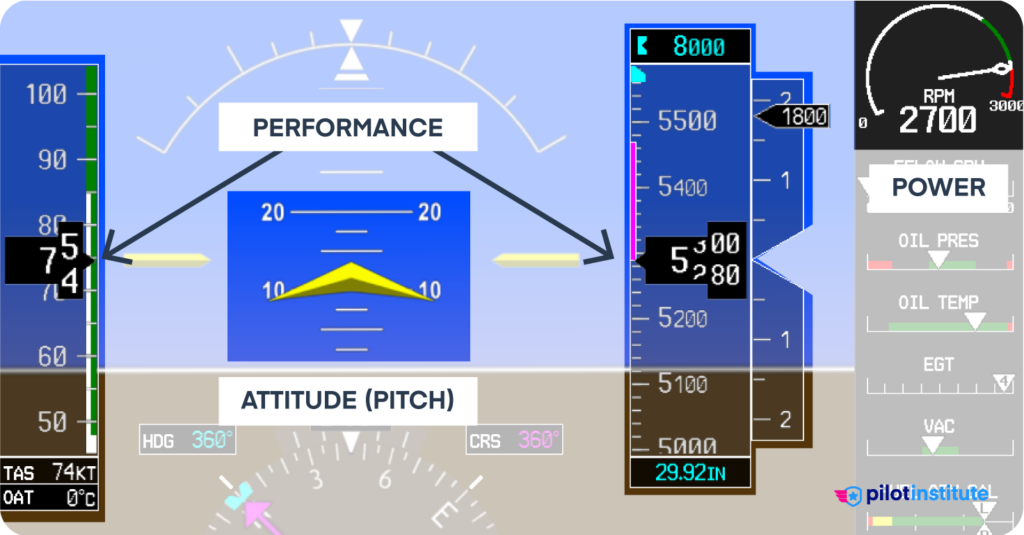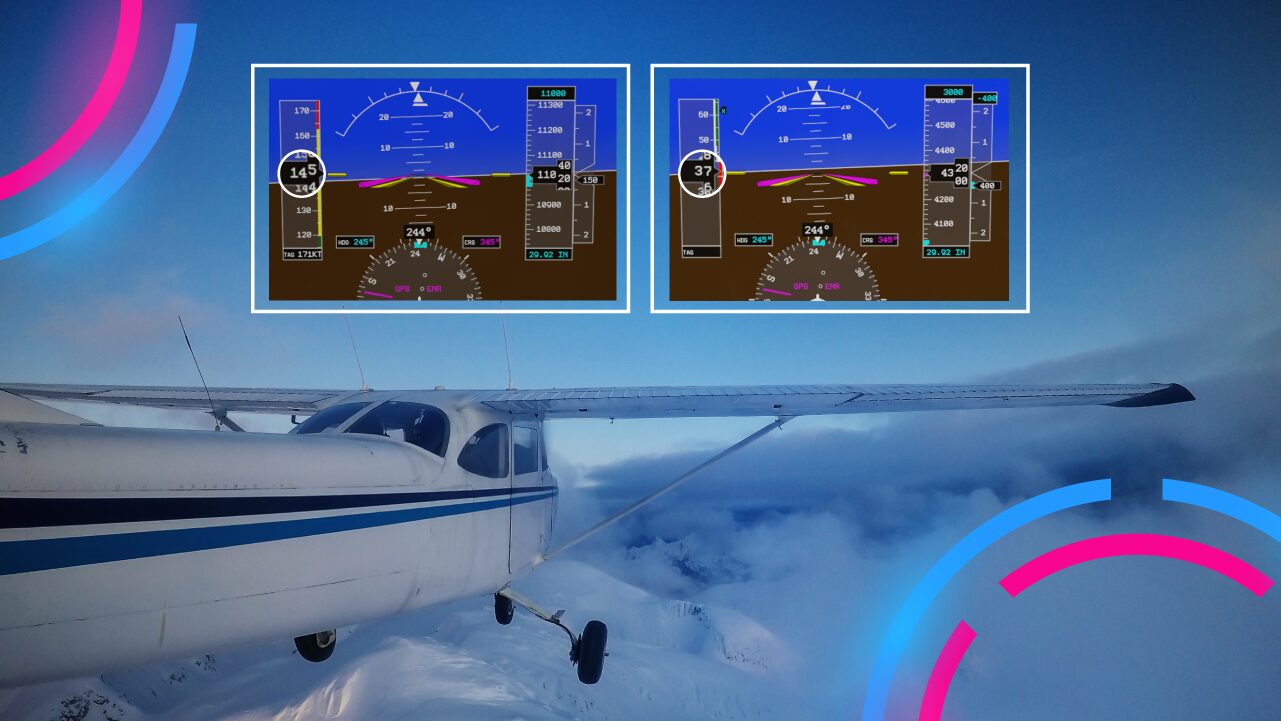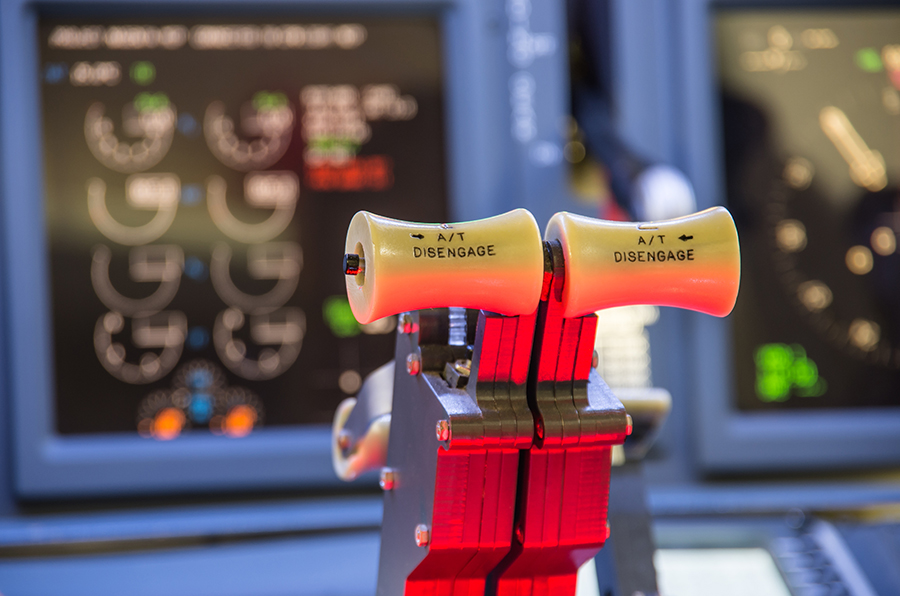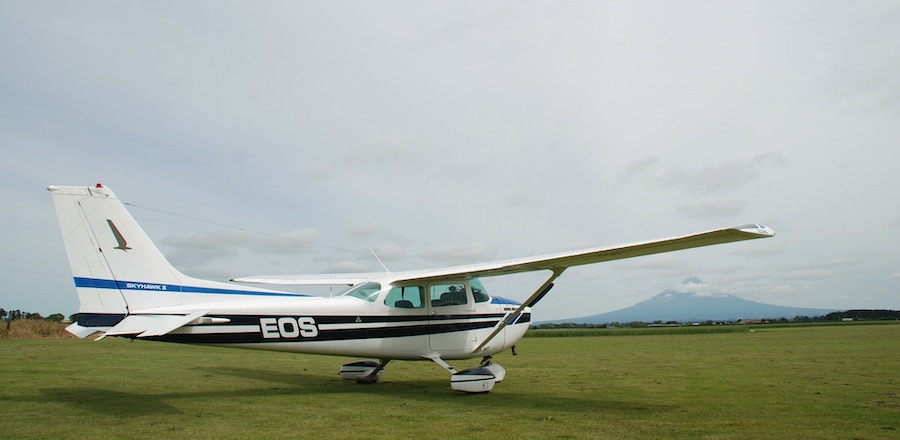-
Key Takeaways
-
The Pitot-Static System
- The Dangers of Failure
- Static and Dynamic Pressure
-
Pitot Tube Inlet Blockage
- Scenario 1: Pitot Tube Inlet Icing
-
Pitot Tube Inlet and Drain Hole Blockage
- Scenario 2: Pitot Tube Inlet and Drain Hole Icing
-
Static Port Blockage
- Alternate Static Source
- Scenario 3: Static Port Icing
-
Total System Failures
-
Detecting Pitot-Static System Failures
- Instrument Cross-Check
- Attitude + Power = Performance
- Expand Your Scan
-
What to Do If You Suspect a Pitot-Static Failure
- Turn off the Autopilot
- Use Pitot Heat and an Alternate Static Source
- Exit Icing Conditions
- Manage the Instruments
- Use Known Pitch and Power Settings
- Declare an Emergency
-
Conclusion
A pitot-static system problem in flight is something no pilot wants to experience.
The signs of failure can be challenging to detect and even harder to understand. The resulting confusion has caused numerous accidents, even with experienced airline crews.
So, how do we diagnose pitot-static failures before things get out of control?
In this article, we’ll help you spot the signs of pitot-static issues so you can get back on the ground safely.
Key Takeaways
- The pitot-static instruments include the airspeed indicator, altimeter, and vertical speed indicator.
- A system failure causes the instruments to provide false information, which can cause a loss of control.
- A blocked pitot tube affects the airspeed indicator. A blocked static port affects all three pitot-static instruments.
- Learning the signs of pitot-static failures is the key to getting back on the ground safely.
The Pitot-Static System

The Dangers of Failure
Every pilot knows the importance of accurate airspeed and altitude readings. Losing the airspeed indicator or altimeter during a pitot-static failure can be catastrophic.
The troubling thing about pitot-static failures is that they can be difficult to notice. Most aircraft cannot alert the pilot that something has gone wrong.
If a failure goes undetected, the pilot might lose control of the aircraft. Loss of control in flight is the most common cause of fatal GA accidents worldwide.
Understanding the signs of pitot-static failures is an important skill for aviators. Pilots must know when instrument readings don’t make sense and address the problem immediately. This is particularly important when flying in Instrument Meteorological Conditions (IMC).
Before we dive into pitot-static failures, let’s briefly discuss how the system works.
Static and Dynamic Pressure

The pitot-static system operates the following instruments:
- Airspeed indicator (ASI).
- Altimeter.
- Vertical speed indicator (VSI).
The system relies on two types of air pressure: static and dynamic. All three instruments use static pressure, but only the ASI uses dynamic pressure.
Static Pressure
Static pressure is the ambient pressure of the atmosphere. We feel this pressure around us all the time. Static pressure enters the aircraft’s pitot-static system through the static port.
Changes in altitude cause changes in static pressure. As the aircraft climbs, pressure decreases because less air is pushing down on it from above. During descent, the pressure increases.
Altitude and vertical speed are measured directly from changes in static pressure.
Dynamic Pressure
The aircraft’s motion through the air creates dynamic air pressure. This is the pressure you feel when you put your arm out the window of a moving vehicle. The relative wind pushes against your hand.
Dynamic pressure enters the aircraft’s pitot-static system through the pitot tube inlet. However, the pitot tube can’t measure dynamic pressure directly. It has no way of separating it from the static pressure that exists all around us.
This combination of dynamic and static pressure that enters the pitot tube is called total (or ram) air pressure.
The aircraft’s equipment needs to isolate the dynamic pressure to determine airspeed. To do this, it subtracts the (static port’s) static pressure from the total pressure. The resulting dynamic pressure gets converted to the airspeed we see in the cockpit.
In analog cockpits, the pressure-to-airspeed conversion happens within the ASI itself. In “glass cockpit” aircraft, an air data computer (ADC) performs this task.
Need a more in-depth refresher on pitot-static instruments? Read The Pitot-Static System: How It Works before moving on.
Pitot Tube Inlet Blockage

The pitot tube sticks out from the wing or fuselage. It samples the stream of air using the front-facing inlet. A drain hole in the back of the pitot tube allows moisture to escape.
The pitot tube’s main weakness is that it is easily blocked. The instrument will not work correctly if something obstructs the inlet or drain.
A pitot tube may become partially or fully blocked by:
- Moisture and ice.
- Blowing dirt from when the aircraft was parked.
- Nest material from insects such as mud daubers.
The solution to preventing blockages on the ground is simple: install a pitot tube cover. (Just don’t forget to remove it before flight!)
But things get more complicated when the pitot tube hole becomes blocked while in the air. The system’s dynamic pressure escapes through the unblocked drain hole. The only pressure that remains is the ambient static pressure.

The ASI will read zero knots when the ram air pressure drops to zero. A reading of zero airspeed will surely get your attention quickly.
However, when blockages happen in flight, there isn’t always a total loss of airspeed. When ice blocks the pitot tube, the drop in airspeed is often gradual, which makes problems hard to detect.
The solution to icing is pitot heat. Pitot heat uses a heating element inside the pitot casing to prevent and melt ice. It should switched on before takeoff or before entering visible moisture.
Scenario 1: Pitot Tube Inlet Icing

The pilot knows that icing conditions are forecast along their route. The risk is acceptable: their aircraft is icing-certified.
As they enter instrument conditions, they keep an eye on the wings for traces of ice. The autopilot handles the flying.
They don’t notice any ice on the wing’s leading edge. However, they do notice that the airspeed dropped 10-15 knots below normal. As a precaution, they turn on the aircraft’s pitot heat. But it is too late to stop ice from blocking the pitot tube inlet.
The airspeed reading soon becomes unstable, dropping to less than 20 knots. It briefly returns to normal, then falls to zero.
Without stable pitot-static data, the autopilot loses control of the aircraft. As the aircraft plunges downward, the pilot fights to regain command.
Pitot Tube Inlet and Drain Hole Blockage

If the pitot tube and drain hole get blocked, the total air pressure in the pitot tube becomes trapped.
The trapped pressure causes the airspeed indicator to become stuck in place. If the aircraft changes airspeed in level flight, the ASI remains fixed.
However, the airspeed reading will change if the aircraft climbs or descends. This change is not related to actual variations in airspeed. It’s caused by differences in static pressure from the unblocked static port.
A climb decreases the static pressure, causing the trapped pitot pressure to “push” the airspeed indicator higher. Likewise, increasing static pressure during descent causes the ASI to show a decrease in airspeed.
The change in static pressure makes the ASI act like an altimeter.

Scenario 2: Pitot Tube Inlet and Drain Hole Icing

An aircraft approaches a layer of clouds shortly after a rushed intersection takeoff. In their haste to depart, they forgot to turn on the pitot heat.
Shortly after entering the clouds, ice begins to cover the pitot tube and drain hole.
Flying at the best rate-of-climb speed, VY, the pilot doesn’t realize the pitot tube has become blocked.
As the aircraft climbs, the airspeed indicator shows increasing airspeed. This erroneous reading causes the pilot to raise the nose. The airspeed continues to increase. But in reality, the aircraft is slowing down due to the high pitch attitude.
If the pilot fails to recognize the blockage, they will soon stall while in IMC.
Static Port Blockage

The static port is a very unassuming piece of equipment. It’s typically a circular metal disk on the aircraft’s skin with a small hole in the middle. Some aircraft have static ports as part of the pitot device.
A quick preflight might cause you to miss a static port obstruction. Tape from washing or painting and wasp nests are frequent causes of blockage on the ground. In the air, blockages are usually caused by ice or trapped moisture.
A static port blockage affects the pitot-static instruments in the following ways:
- The ASI will still indicate changes in airspeed, but it will be inaccurate.
- The altimeter will freeze at the altitude where the blockage occurred.
- The VSI will produce a continuous zero indication.
If the altimeter and VSI do not reflect climbs or descents, that is a clear sign of a blocked static port. However, changes in airspeed readings can be confusing to pilots.

If the aircraft changes altitude, the static component of total pressure changes. The static port’s (blocked) pressure stays the same. The conflicting static pressures cause the ASI to read incorrectly.
The airspeed indicator will read higher than the actual speed when below the blockage altitude. Likewise, airspeed will read lower above the blockage altitude. The error increases the further the aircraft is from that altitude.
Alternate Static Source

Most aircraft are equipped with an alternate static system. This system allows the pilot to provide static pressure from another source if the main port becomes blocked. The location is typically inside the cockpit in unpressurized aircraft, safely hidden from ice (and tape). A knob or switch in the cockpit allows quick activation.
The alternate static source provides slightly lower pressure than the external static port. This is due to a slight vacuum created when the aircraft moves through the air. The Venturi effect explains this phenomenon.
The pitot-static instruments work differently when using the alternate static source:
- The altimeter indicates a slightly higher altitude than the actual altitude.
- The ASI indicates an airspeed greater than the actual airspeed.
- The VSI shows a momentary climb and then stabilizes.
What if the aircraft doesn’t have an alternate static source? In analog cockpits, you can break the glass face of the VSI. This introduces static pressure into the system but renders the VSI inoperative.
Why choose the VSI? The answer is simple. It’s the least important (and cheapest) pitot-static instrument.
Scenario 3: Static Port Icing

While flying above the freezing level, moisture trapped in the static line turns to ice. Eventually, it blocks the static pressure in the system.
After beginning their descent, the pilot notices that the altimeter isn’t moving. Likewise, the VSI shows no change. However, the airspeed is increasing.
Confused by the readings, the pilot pulls power to reduce speed and descend faster. The airspeed continues to increase, but the altimeter doesn’t move.
As the pilot struggles to understand what’s going on, they risk losing control of the aircraft.
Total System Failures

It is possible for the entire pitot-static system to fail.
If icing blocks both the pitot tube and the static port, it will trap all the pressure in the system. This means the airspeed indicator and altimeter will freeze in place, and the VSI will read zero.
Another point of failure in glass cockpit aircraft is the ADC.
The ADC takes feeds from the pitot tube, static port, and outside air temperature gauge. It then calculates indicated and true airspeed, altitude, and vertical speed. If the ADC fails, you will lose readings from all the pitot-static instruments.
An ADC failure is a shocking thing to see. However, it is the least hazardous pitot-static system failure. Why? The primary flight display (PFD) will warn you a failure has occurred. Additionally, it does not prevent you from using the standby instruments to land safely.
Detecting Pitot-Static System Failures

The first step to dealing with a pitot-static failure is recognizing you have a problem.
There is no direct indication of a blocked pitot-static system. The only way to identify failures is to cross-check the instruments for irregularities.
Instrument Cross-Check

A good instrument scanning technique is the hub-and-spoke method. This method focuses on the attitude indicator (the hub). Move your eyes from the attitude indicator to another primary instrument (a spoke). Then look back to the attitude indicator again. This cycle continues with each primary instrument and eventually loops around again.
Does your aircraft have standby instruments? Include them in your scan every once in a while. Be aware that most light aircraft only have one pitot-static system, which is shared by both primary and standby instruments.
Take a closer look if you see any readings that don’t make sense. You may be experiencing a pitot-static problem.
Attitude + Power = Performance

Know your aircraft’s expected performance for typical attitude and power settings. If your aircraft performs better or worse than you know it should, there could be a pitot-static issue.
There have been accidents caused by pilots believing in the impressive (but false) increase in aircraft performance. Don’t fall for it. Know what performance numbers are within the realm of possibility.
Expand Your Scan

In addition to the conventional instruments, include the GPS unit in your scan. A GPS can provide you with ground speed and geometric altitude references. Electronic Flight Bags (EFBs), such as Garmin Pilot and ForeFlight, will do the same.
While you can’t safely fly using GPS groundspeed alone, it’s a useful reference point. For example, if your ASI shows rapidly decreasing airspeed but your GPS disagrees, your pitot-static system may be at fault.
What to Do If You Suspect a Pitot-Static Failure

Turn off the Autopilot
If you’re using the autopilot, turn it off and manually fly the aircraft. The autopilot cannot control the aircraft without data from the pitot-static system. Attempting to use it might cause a total loss of aircraft control.
Use Pitot Heat and an Alternate Static Source
Turn on the pitot heat and select the alternate static air source as soon as possible. The pitot heat may take some time to melt the ice, so don’t expect immediate results.
If the pitot heat isn’t working, check to see if the circuit breaker tripped.
Exit Icing Conditions
If icing caused the pitot-static failure, your top priority is exiting icing conditions. If your aircraft is not certified for flight into known icing conditions, you also have airframe icing to worry about.
Manage the Instruments
Cover any failed instruments if possible. Ignoring false readings, especially in IMC, can be challenging. Many pilots become confused as they subconsciously process the false information. They can also become fixated on the wrong instrument.
An ADC failure will cause a total loss of pitot-static instrument readings. If your aircraft only has one ADC, you will have to rely on the standby instruments. Make sure you’re familiar with your specific aircraft’s emergency procedures.
Use Known Pitch and Power Settings
What can you do if you’ve lost all of the pitot-static instruments? Use known pitch and power settings for descent and landing. Be aware that structural icing increases stall speed, requiring a faster approach.
You can also use other cues, such as the sound of air over your cabin and the stall horn. Use your GPS or EFB for a general idea of your airspeed and altitude.
Declare an Emergency
Instrument Flight Rules require that you report the system failure to ATC. But if you need assistance under visual flight rules, do not hesitate to declare an emergency. ATC can help, especially at night or during marginal visibility conditions.
Conclusion
As pilots, we heavily rely on pitot-static instruments.
We would never take off without dependable airspeed and altitude information. But if we lose these instruments in flight, we must apply our knowledge and skills to get on the ground safely.
Spend some time learning how your aircraft’s pitot-static system works. Read up on the emergency procedures. Consider simulating pitot-static failures with your instructor.
If you ever experience a real in-flight pitot-static failure, you’ll be glad you did. Want to learn more about instrument scans? Check out The Six Pack: Basic Flight Instruments.



